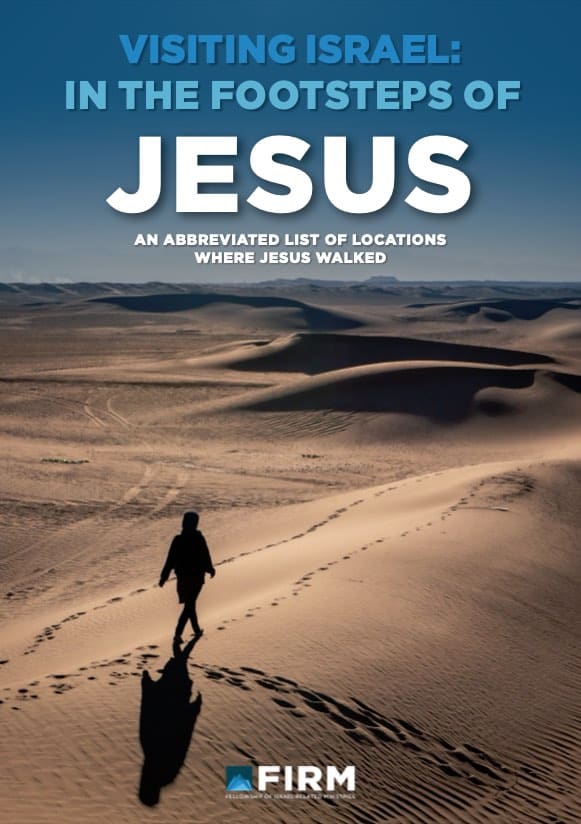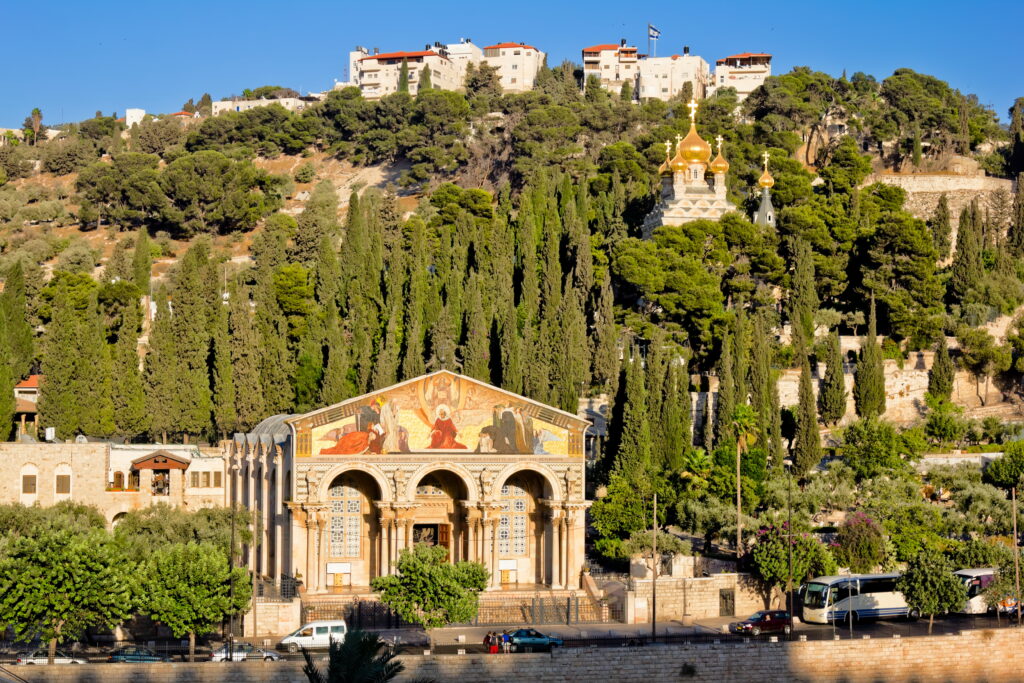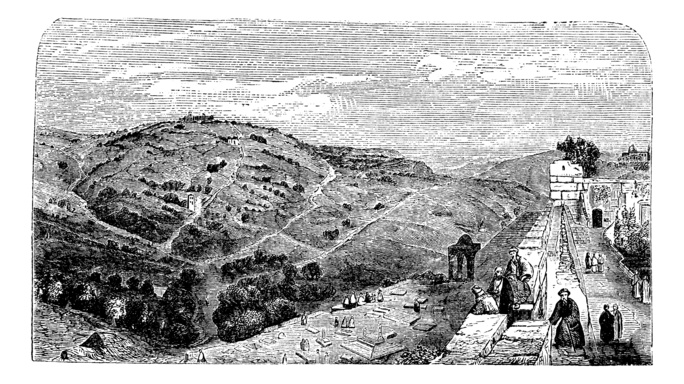The Mount of Olives and the Temple Mount
The second most famous mountain in Jerusalem (the Temple Mount on Mount Moriah or Mount Zion being the first) is the Mount of Olives. Why is it so significant?God chose to reveal His redemptive plan and purpose through a small country on the crossroads of Europe, Asia, and Africa. He chose a region known as the Middle East.
Israel is about the size of New Jersey. Its capital Jerusalem, though often referred to as the city of peace, has had this name challenged over and over through the years. Many battles and unresolved conflicts have battered it for years.
Mount of Olives separates the Temple Mount, the most holy place in Judaism, from the Judean Desert. We know it to be the place from which Jesus the Messiah ascended into heaven (Acts 1:11), and where He will one day return. What is the Mount of Olives?
The Mount of Olives has been a silent witness to many significant events in the Bible, as well as in modern history. But more than that, the hill has played an important role in some of them. Also called the Mount of Anointment, the hill owes both of its names to its olive groves. That is to say, Mount of Olives served the city in making olive oil to anoint Israel’s kings and temple priests.
Place of Prayer
The Mount of Olives was first known as a place of prayer. King David ascended to the Mount of Olives, barefoot, in prayer, while attempting to escape the rage of his son Absalom. Those in his company also wept (1 Samuel 15:30).
The prophets Zechariah and Ezekiel prophesied from here future judgement on Israel, as well as the future restoration and the regathering of the exiles. Additionally, Zechariah describes the Mount of Olives as the exact place where the Messiah would return (Zechariah 14:4).
Jesus Praying on the Mount of Olives
Jesus prayed on the Mount of Olives on the day before the crucifixion – in the Garden of Gethsemane.
It was there that an angel comforted Him. During Jesus’ life, as He ministered to the multitudes, He would often retreat to pray on the Mount as well (Luke 21:37, Luke 22:39).
In the week leading up to the Cross, Jesus visited the Mount of Olives three times. In the first instance, He came down Mount of Olives and entered Jerusalem on a donkey, as foretold by Zechariah the Prophet.
The second time He could be found in the Garden of Gethsemane with His disciples. He was explaining to them the days to come. Finally, He visited Mount of Olives one last time that week, on the night He was betrayed. Now, let’s take a closer look at each one of these visits.
Mount of Olives and the Messiah
The first visit is recorded in Luke 19:28-39. As Jesus moved towards the Temple Mount, crowds of Jewish people greeted Him with a proclamation:
“Blessed is the King who comes in the name of the Lord; Peace in heaven and glory in the highest!” (Luke 19:38). These words were not random. It is the official messianic greeting based on the words of Psalm 118:26.
Jesus fulfilled the words of the Prophet Zechariah, which said the Messiah would arrive on a humble donkey (Zechariah 9:9).
During the second visit, Jesus answered His disciples’ questions about the end of days. It is one of the clearest passages of eschatology in the Gospels. Meaning, it gives a detailed picture of the tribulation and second coming of Jesus (Mark 13:1-37, Luke 21:5-36).
Jesus’ Second Coming
This discourse simultaneously describes the immediate future, while also pointing to Jesus’ second coming.
The dramatic events of that week culminate in the events of the Passion. In anticipation of His arrest and betrayal, Jesus returns to the Mount of Olives to pray one last time.
He returns to the place where King David fled from his son Absalom, where King Solomon worshipped idols, where the prophets Ezekiel and Zechariah prophesied… And where He himself prayed, taught and prophesied. He chose this hill for His final moments before being betrayed.
Jesus’ Ascension and Future Return on the Mount of Olives
We know from Acts 1:11-12 that Jesus ascended to Heaven from the Mount of Olives. Zechariah 14:14 gives us the future hope and assurance that Jesus will one day return to the very same location.
Jesus the Messiah died and rose again on the third day, and now is seated in heavenly places at the right hand of the Father. Yet, God’s plan for Israel and the nations, for you and me, is not finished. The scriptures assure us that one day, Jesus the Messiah will put an end to all strife in conflict and will rule from Jerusalem (Micah 4:1-5).
What does the Mount of Olives represent?
Considering its history and its role, the Mount of Olives represents an everlasting hope that Jesus, our Savior, is the same yesterday, today and forever (Hebrews 13:8).
He defeated death and will one day rule from Jerusalem, bringing peace to this Holy City and to the World.
The very place where King David hung his head in defeat, where Jesus wept and was betrayed, He also ascended to be with the Father and will come back in glory. We have the assurance that we too one day will be resurrected (1 Corinthians 15:20) and enjoy eternity with Him forever and ever. (John 3:16, John 5:24, Romans 6:23, Matthew 25:46)
Mount of Olives Today
Today, visitors from around the world visit the Mount of Olives to see where Jesus walked and prayed. You too can visit this meaningful place and walk in Jesus’ very footsteps. Go to the Mount of Olives to look over the city of Jerusalem and pray for peace.
Did you join us for our Best Moments Digital Tour? Check out this video of the best view of Jerusalem from the Mount of Olives!

Visiting Israel: In the Footsteps of Jesus: Free PDF Download
It is quite exciting to think that while touring Israel you are walking on the same land that Jesus did.
Whether it is the reason why you came to Israel or not, it is worth noting which locations were significant to His life and ministry. God chose this piece of land to send His Son to live on earth. Many archeological findings confirm the locations mentioned in the Bible.
Articles Related to the Mount of Olives
Estimated reading time: 5 minutes


